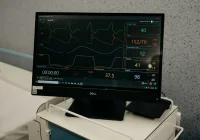Health IT has moved from a back-office function to a core pillar of care delivery, yet many teams remain overstretched by staffing shortages, financial pressure and rapid technological change. Demand for skilled professionals has risen sharply and is expected to keep growing through 2033, widening gaps that hinder secure and responsive infrastructure. Traditional routes to continuing education can be costly and difficult to scale, particularly for underfunded providers. A shift toward affordable, flexible online learning is providing an alternative that meets operational realities. By aligning training to job requirements and making courses accessible anytime and anywhere, health systems can upskill teams at pace, strengthen cybersecurity readiness and support safe, reliable services.
Must Read: Re-evaluating Phishing Training in Healthcare
Rethinking Health IT Education
Conventional professional development relies on graduate degrees, multi-day in-person workshops or adapted internal programmes that demand significant amount of time, money and staffing. These barriers have disproportionately affected smaller systems and safety-net providers that struggle to compete for talent while adopting modern tools. Subscription-based online platforms are changing that calculus. With extensive content libraries, self-paced courses and certification pathways mapped to real job roles, teams can build capabilities as work demands evolve. The ability to learn at any time and from any location suits health IT staff who balance project deadlines, on-call responsibilities and unpredictable workload peaks, enabling progress without disrupting services.
Lower barriers also expand opportunity. When the cost and time commitment for technical upskilling drop, pathways open for professionals from underrepresented backgrounds and non-traditional careers. A broader pipeline supports organisational agility and innovation by bringing diverse perspectives into problem-solving. For providers in smaller markets or remote regions, online programmes help level recruitment by making it feasible to hire for potential, then training new staff rapidly on critical systems, protocols and technologies. This reduces reliance on travel or infrequent classroom sessions, keeping learning close to the point of need and aligned with real-world tasks.
Onboarding, Engagement and Retention
Targeted upskilling does more than close immediate gaps. It prepares teams for ongoing change, which is constant in healthcare technology. Scalable training solutions shorten onboarding, raise productivity and signal a commitment to career growth. Employees who see clear routes to develop skills are more likely to stay, preserving institutional knowledge that underpins patient safety, data security and operational continuity.
Flexible learning options can also ease pressure in short-staffed environments. When individuals can progress at their own pace, confidence and autonomy improve, helping to counter burnout and turnover. Organisations benefit from a workforce that can move quickly from foundational to advanced competencies as new tools arrive, without pausing critical operations. Treating education as an embedded element of the employee experience, rather than a one-off event or a benefit reserved for large, well-funded systems, makes capability building routine. The result is a more resilient IT function that can absorb change while maintaining service quality and safeguarding sensitive data.
Closing Evolving Skill Gaps
The skill profile for health IT continues to shift with the adoption of AI-enabled diagnostics, the expansion of telehealth platforms and ongoing cybersecurity updates. Gaps emerge quickly as standards change and systems are modernised. Thoughtfully curated online learning, aligned with industry expectations, provides the timeliness and specificity needed to keep pace. Courses can be sequenced to address immediate requirements, then extended to cover adjacent competencies as responsibilities grow.
This approach supports both seasoned professionals and new entrants. Experienced staff can refresh knowledge to match updated protocols, while recent hires gain structured pathways into complex environments. Real-time relevance is the differentiator: content can be updated as technologies evolve, allowing organisations to maintain alignment between training and production systems. With more providers digitising, the capability to develop and sustain a skilled IT workforce becomes a strategic advantage. Investing in accessible, scalable upskilling demonstrates foresight and ensures teams can respond to current demands and prepare for what comes next without excessive reliance on external hiring.
Affordable, flexible online learning offers a practical route to address widening health IT skill gaps while supporting secure, stable operations. Replacing costly, rigid models with scalable programmes can speed onboarding, strengthen engagement and retain expertise that protects patients, data and continuity. Embedding continuous education into everyday work will help health systems of all sizes build resilient teams ready for present challenges and future change.
Source: Healthcare IT Today
Image Credit: Freepik










